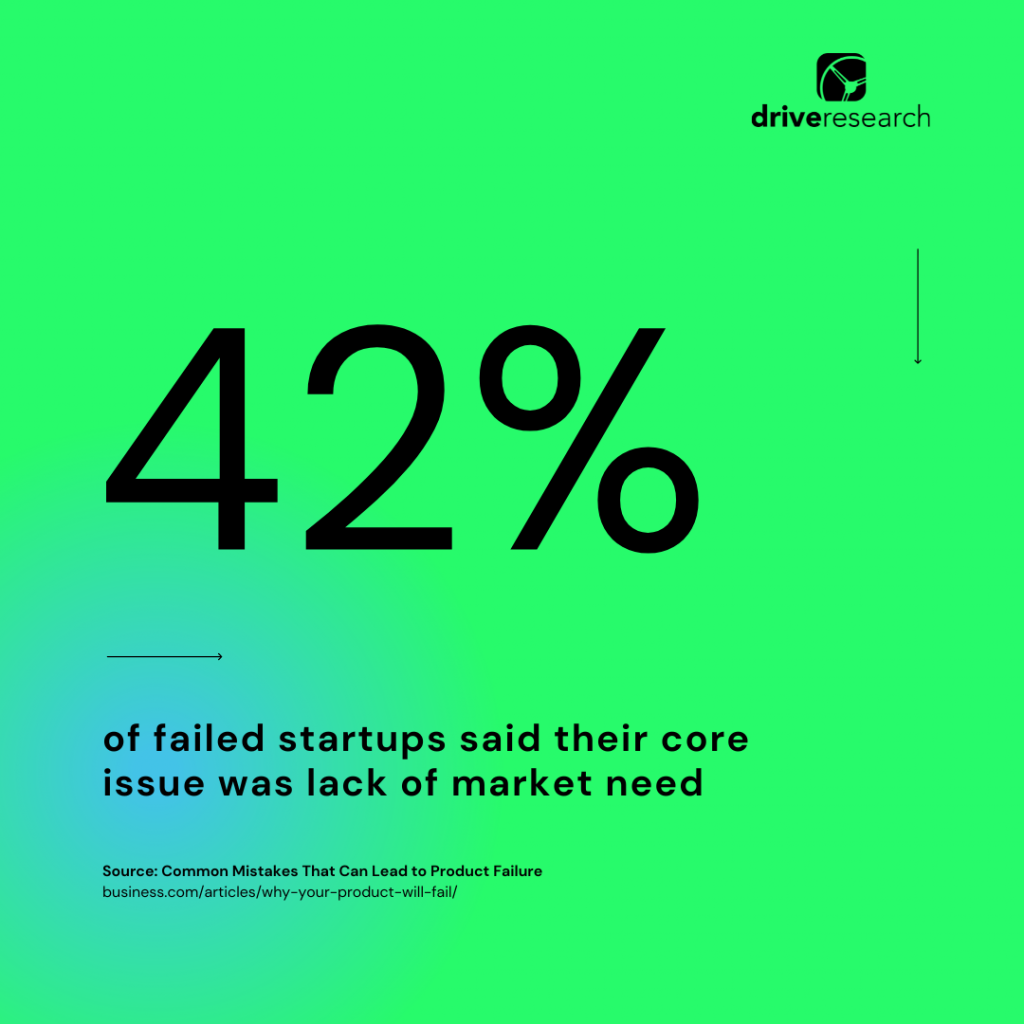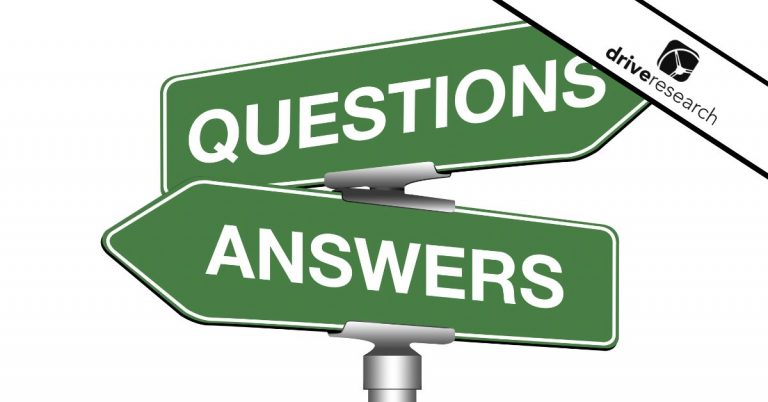
Bringing something new to market is expensive. You’re investing in product, messaging, sales enablement, paid media, and internal time.
And the truth is, most launches don’t work the first time. Recent analyses continue to show that a huge share of new products never reach meaningful adoption, and failure usually comes down to misjudging what customers actually need or how to position the offer.
When we build go-to-market plans for clients, we treat research as insurance.
Research reduces the guesswork around four questions that decide launch performance:
- Who are we selling to?
- What do they care about most?
- How do we talk about it?
- How much will they realistically pay?
This article covers what go-to-market messaging is, how research supports it, the methods we use to strengthen positioning, targeting, pricing, and channel strategy before launch, and a real project example.
What is a go-to-market messaging strategy?
Your go-to-market messaging strategy is the story you bring to the market. It explains who the product is for, what problem it solves, why it’s better than the current alternative.
In practice, it’s the copy you put in ads, on landing pages, in sales decks, and in that first 10 seconds of a sales call.
The goal is to make your ideal buyer say, “That’s exactly the problem I have, and I haven’t heard anyone else say it that clearly.”
A strong go-to-market messaging strategy does three jobs at once:
- It makes the pain feel real. You are naming something your audience is already frustrated by.
- It positions your product as the obvious fix.
- It creates urgency. Not “someday,” but “I should act on this now.”
Where teams get in trouble is when they write this story internally without pressure-testing it with real buyers.
In our experience, that’s how you end up with vague claims like “all-in-one” or “seamless experience,” which buyers mentally skip right past.
This is where market research becomes more than “nice to have.” It tells you which benefits actually move people and which ones are just internal wish lists.
A simple example: “TaskMaster Pro”
Let’s use a fictional product called TaskMaster Pro, a project management platform built for small and mid-sized businesses.
| Here’s what most teams do: | Here’s what a research-driven team does instead: |
|---|---|
| They list every feature. Task tracking, communication hub, file sharing, status dashboards. | They talk to actual buyers first. In this case, owners, PMs, and team leads inside 10 to 200 person companies. |
| They describe it as “an intuitive, all-in-one productivity solution.” | They ask about the moment work starts to fall apart. Not “What features do you want?” but “Walk me through the last time a project slipped and why.” |
| They assume price sensitivity, so they call it “affordable.” | They test messages head-to-head. For example, does “Stop chasing updates in four different tools” outperform “Keep your projects on track”? |
What usually comes out of this type of work is focus. 🎯🎯
Let’s say those in-depth interviews reveal that the real pain is not “We need more features.”
It’s “I spend my entire day chasing status updates in Slack, email, and spreadsheets.”
Now the lead story is no longer “intuitive, all-in-one platform.” It becomes “One place to see who’s behind, without chasing people.”That sounds simple, but tightening that message is what gets attention in crowded categories.
In our work with SaaS companies, this kind of message testing tends to shape their homepage hero line, the first slide of the sales deck, and even the outbound email subject line.
How market research improves your go-to-market strategy
Most failed product launches fail for preventable reasons. For instance, studies show that a large share of new products never get real traction, and a top driver is “no market need,” which is another way of saying “we guessed instead of validating.”
One analysis of startup failures found that about 42% said the core issue was that the product didn’t actually solve an urgent problem.

Good product development research attacks that exact risk before you spend heavily.
Below are three research methods we run often for companies getting ready to launch or reposition. Each one answers a different question you’ll need to lock down before you scale spend.
1. Online surveys
“Which benefits actually matter the most?”
Online surveys are one of the fastest ways to collect measurable data from your target audience.
We use them to quantify things like:
- Which pain points are truly widespread versus loud but rare
- Which features drive purchase interest
- How different price points affect likelihood to buy
In our experience, surveys are especially useful when leadership teams are arguing internally.
Instead of “sales thinks buyers care most about X, product thinks it’s Y,” you can put a ranked list of value props in front of 200 qualified buyers and get real data back.
Why this matters for go-to-market:
- You know which benefit gets top billing in messaging. ✅
- You know which segment is most likely to buy first. ✅
- You know what “too expensive” looks like before you finalize pricing. ✅
Plus, from an efficiency standpoint, surveys scale. You can reach hundreds of people in your ideal profile, across regions or roles, very quickly and at a relatively low cost.
That volume gives you statistical confidence, so you’re not building a launch plan on five opinions.
This is a core service we offer. Our team writes the questions, manages fieldwork, and delivers the data in plain English. Learn more about our full-service online surveys.
2. Focus groups
“What language actually resonates?”
Focus groups bring 6 to 12 people from your target audience into a guided discussion (in person or virtual). A trained moderator walks them through concepts, messaging statements, value props, even early creative.
Where a survey will tell you “Message A scored higher than Message B,” a focus group will tell you why.
For example, you might hear:
- “I wouldn’t use that word. That sounds like corporate spin.”
- “I don’t believe that claim. Everyone says they do that.”
- “That pricing actually sounds cheap. I’d assume it’s missing features.”
This is gold pre-launch, because tone and credibility matter as much as the offer itself. Focus groups surface objections you can handle in the messaging before a prospect ever talks to sales.
Yes, focus groups do cost more than a standard online survey. We still recommend them when you need depth, emotion, or nuance.
They’re especially helpful if you’re marketing to parents, patients, or other audiences where trust and safety are part of the decision process.
Recommended Reading: Why Focus Groups Are Important for New Product Development
3. In-depth interviews
“What’s really driving the decision to say yes?”
In-depth interviews are 1-on-1 conversations between a moderator and a member of your target audience. They’re typically 30 to 60 minutes and can be done by phone or video.
We use IDIs when we need to unpack decisions that aren’t purely rational. For example:
- “Walk me through how you chose that program for your child.”
- “What almost stopped you from signing up?”
- “Who else had to be comfortable with the decision before you moved forward?”
Compared to a group setting, people will often share more detail in a private interview. You get stories, not just groupthink opinions.
You also get to probe. If a parent says “Price was a factor,” you can follow with “At what point would it feel too expensive to even consider?” That level of detail can shape pricing pages, FAQs, and sales talk tracks.
When the team at Drive Research runs IDIs, we also build trust with participants, which encourages honesty. That’s important because polite answers do not help your launch.
Case study: GTM messaging research for a youth learning program
One of our clients was an active learning program for kids. Think structured physical activity, social skills, and confidence-building, all wrapped into a program that parents could enroll in.
They came to us with a clear goal: increase parent enrollment.
They wanted to understand which messages actually convinced parents to sign up, and how to talk about the program so it felt relevant, not generic.
We focused on three things.
1. Improve acquisition
They needed to scale beyond word-of-mouth. The team wanted to know which benefits would move a parent from “sounds nice” to “we’re signing up this season.” The research helped prioritize what to say first in ads and landing pages, not just what to say eventually.
2. Create more compelling messaging
The program already had language around fitness and social development. Parents told us those were important, but they reacted much more strongly to confidence, emotional well-being, and positive peer environments. We heard versions of “I want my kid to feel included and build resilience,” more often than “I want my kid to get extra cardio.” That changes the hook.
3. Understand the parent journey
Parents of kids 1 to 10 are busy. They are juggling school schedules, work, logistics, sibling conflicts, and, in some cases, worries about screen time. Part of the work here was mapping how they actually discover programs, what gets their attention, and what slows them down. That included word-of-mouth (recommendations from other parents), cost considerations, scheduling conflicts, and safety concerns.
This kind of journey work matters because most marketing to parents fails in the first five seconds. If you don’t immediately acknowledge the real tension in their day, you lose them.
The research approach
For this project, we recommended in-depth interviews with the exact buyer: parents who had at least one child between ages 1 and 10 and who had already shown interest in structured physical activity or enrichment.
We scheduled five 45-minute interviews over two days with parents across different regions, income levels, and activity preferences.
Some had kids in daycare or enrichment programs. Others were in travel sports, music lessons, or other structured activities.
A few of the questions we explored:
- “When you think about after-school or weekend activities, what has actually worked for your child and why?”
- “What made you consider this type of active learning program in the first place?”
- “How much does cost matter in your final decision?”
- “Have other parents ever recommended a program to you? Did that matter?”
- “If you could design the perfect program for your child, what would it include?”
What we were listening for:
- Emotional triggers (“I just want my kid to feel confident around other kids”)
- Barriers (“Our weekends are already packed”)
- Deal breakers (“If it’s across town on a school night, it’s not happening”)
- Language we could reuse word-for-word in marketing
This depth is exactly why IDIs are so valuable for go-to-market planning. You’re not guessing what to say in campaigns. You’re pulling the exact phrases that already work in the buyer’s head.
Deliverables and outputs
Every engagement like this produces more than “raw interviews.” For this client, we delivered:
Project management and kickoff meeting
We ran a working session to align on goals, timelines, and what “success” actually looked like for their enrollment push. This helps make sure we’re answering the right questions, not just asking interesting ones.
Screener design
We built and programmed a recruitment screener to qualify the right parents. Getting the right audience is critical. Talk to the wrong people and your messaging will skew.
Moderation of interviews
Our moderator led each conversation, probed in the right places, and kept parents comfortable enough to be honest about concerns like cost, safety, and time.
Incentives management
We handled incentive payouts so parents were compensated for their time. This tends to increase show rates and encourage thoughtful responses.
Topline insights report
We built a summary that highlighted key takeaways, priority messages, and watch-outs. The report also included methodology and context so internal teams could confidently share results across marketing, operations, and leadership.
Live debrief and Q&A
After sharing the topline, our team walked stakeholders through the findings and answered questions. This is often where teams translate insights directly into action, such as “This is our new homepage hero,” or “We’re rewriting the paid social intro line to lead with confidence and social connection.”
🛑 If you’re doing this work internally and not partnered with a third-party research firm, make sure you still run that debrief step. Insights die when they live in a slide deck that no one explains.
Improve Your Go-To-Market Strategy With Drive Research
Drive Research is a full-service market research company. We run audience surveys, interviews, message testing, pricing work, and more to help teams build confident go-to-market plans. If you want support before launch, contact us to get a quote.






